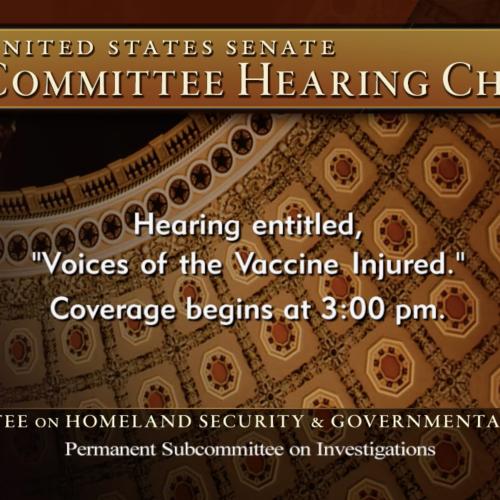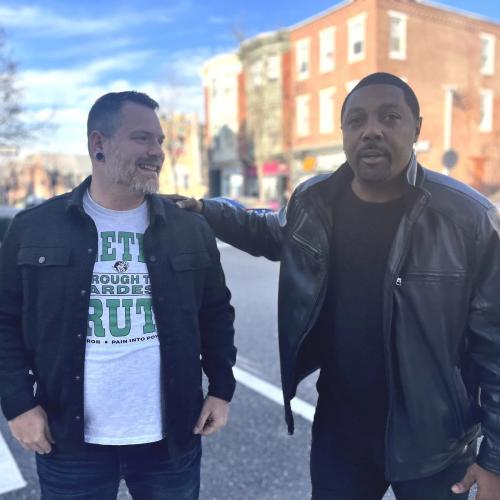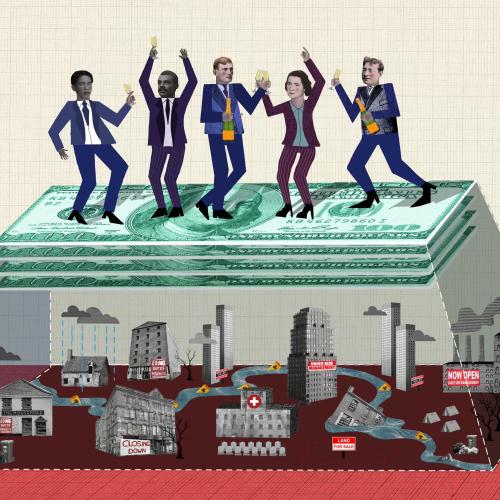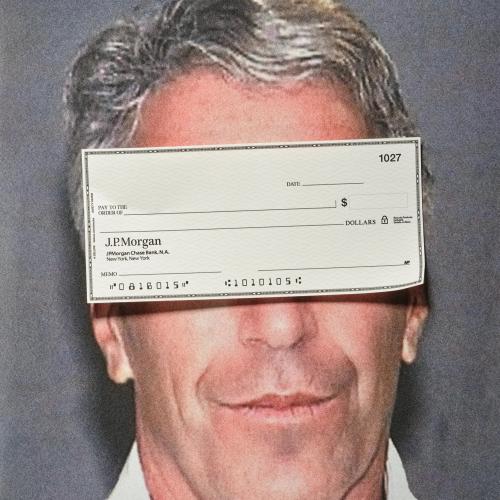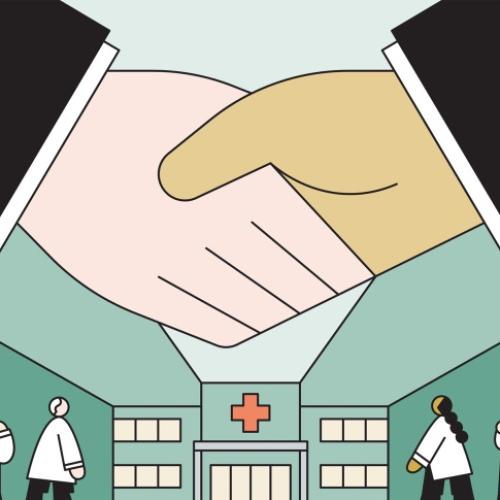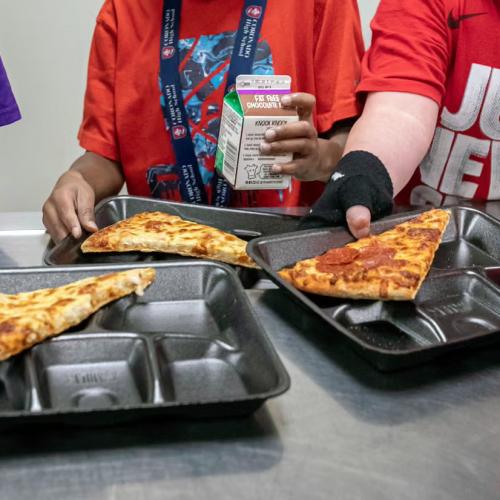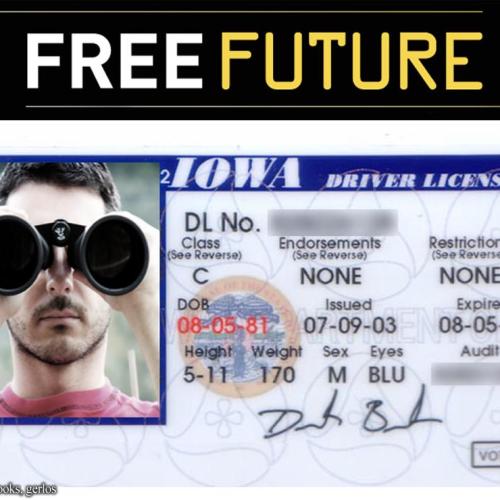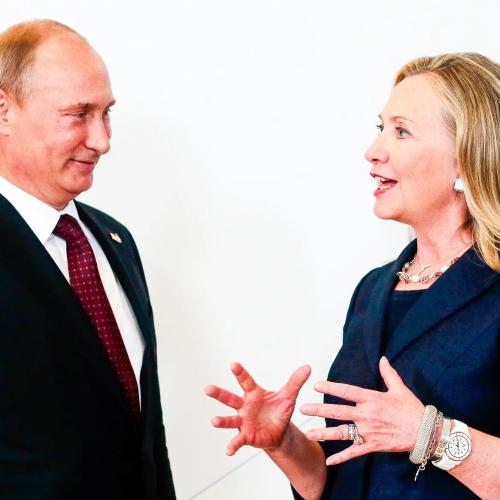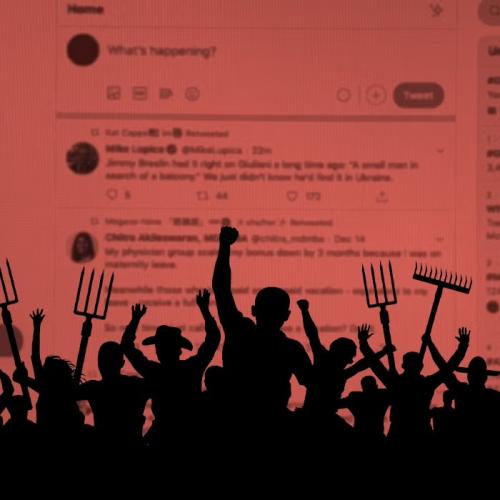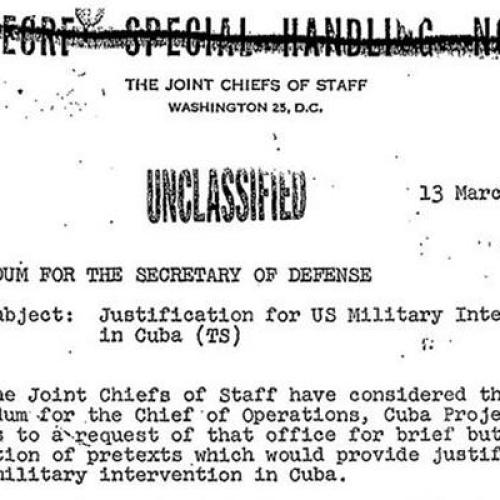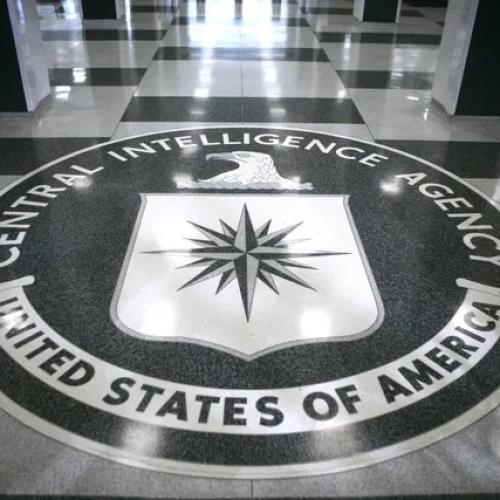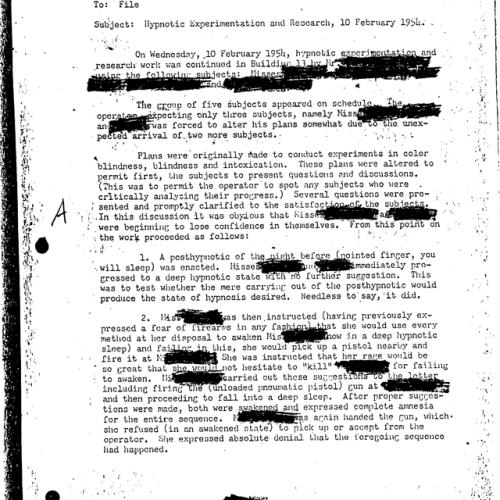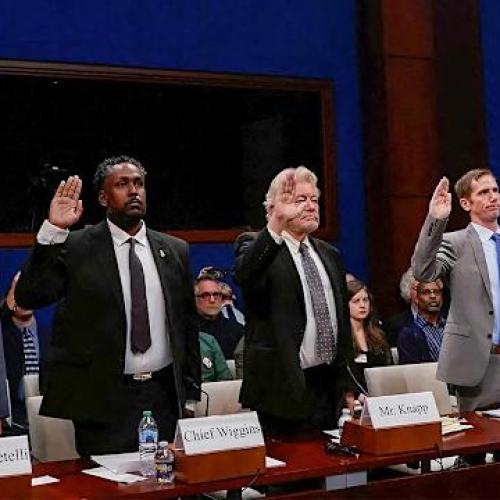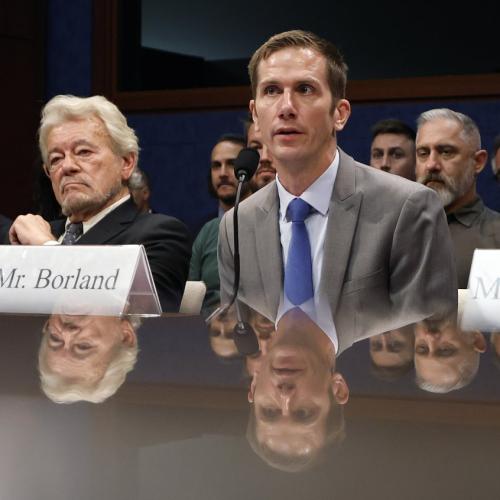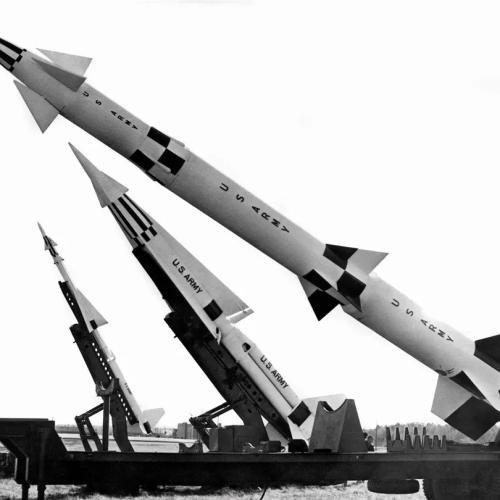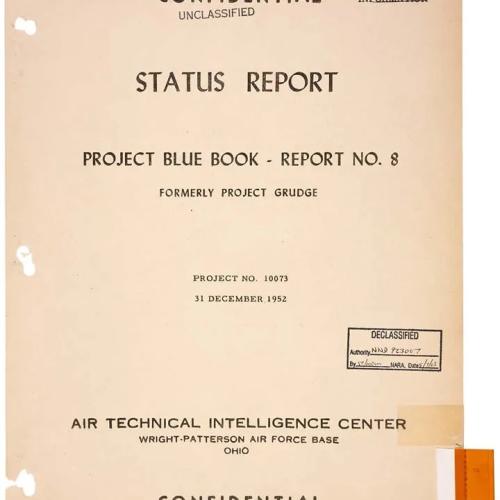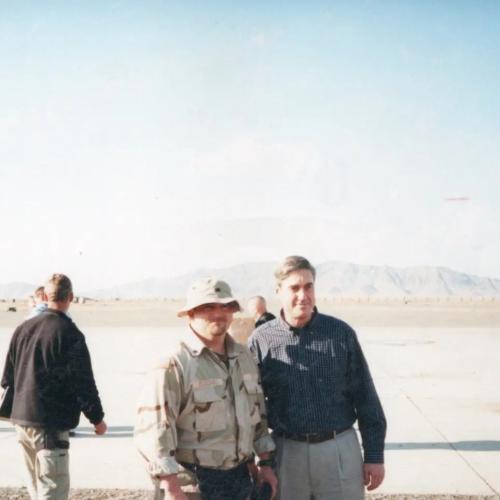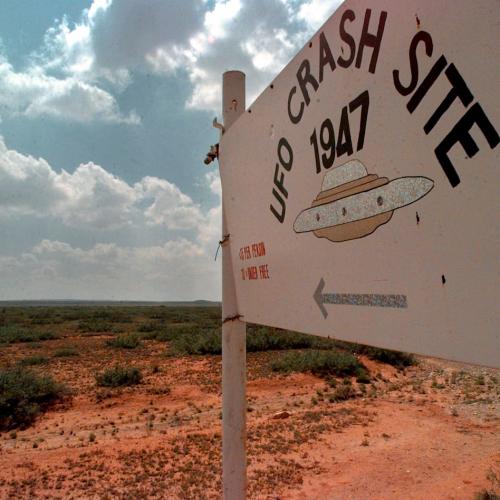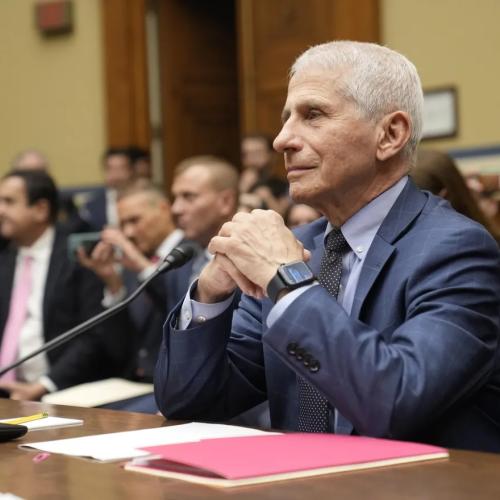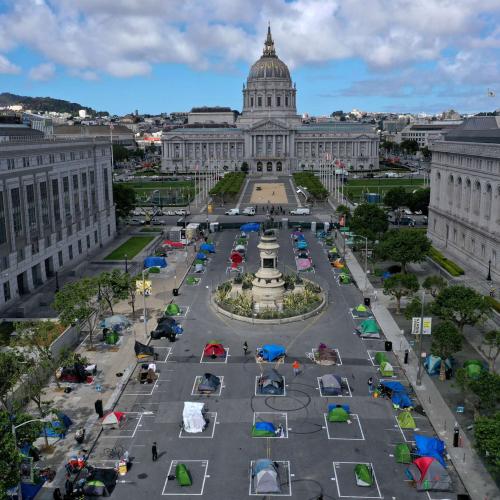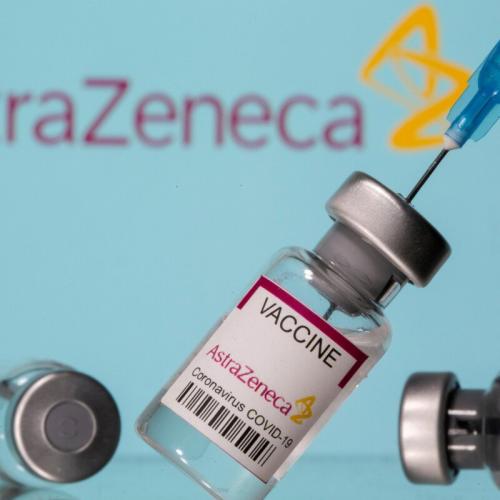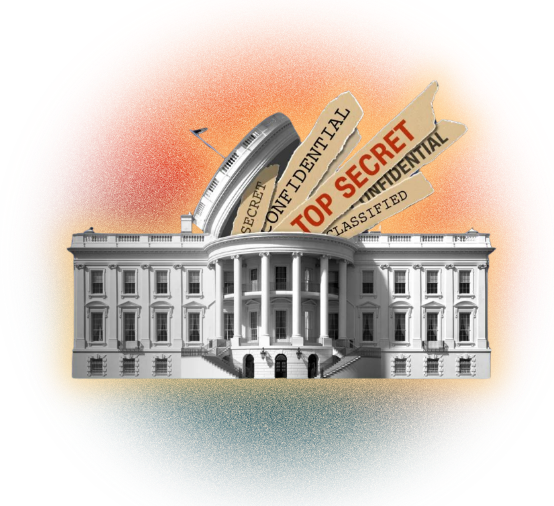Inspiring: Healing Our Relationships News Stories
We believe in the creative, redemptive, and collaborative potential of humanity. Below are key excerpts of inspiring news articles on healing social division and polarization. If any link fails to function, a paywall blocks full access, or the article is no longer available, try these digital tools.
For further exploration, delve into our Inspiration Center.
In a recent Gallup poll, 20% of U.S. adults said they felt lonely “a lot of the day yesterday.” While there might be many steps we can take to encourage connection, on both individual andß societal levels, a big new study suggests there is one step anyone can take right now to blunt the pain of isolation: giving thanks. College of Charleston researchers James B. Hittner and Calvin D. Widholm collected 26 studies of gratitude and loneliness involving nearly 10,000 people around the world. Then [they] conducted a “meta-analysis” of all the studies together, which can provide stronger evidence for a finding than one study alone. Their results suggest that grateful people tend to be less lonely—no matter their age, their gender, or whether they live in the U.S. or elsewhere. If someone was above average in gratitude, they had a 62% chance of being below average in loneliness. Loneliness, research suggests, is ultimately about how we perceive our relationships and whether they measure up to what we want. And “if one is grateful, then what that should be facilitating are richer, stronger social relationships,” says Hittner. One study found that grateful people were more “psychologically flexible,” able to nimbly cope with adversity and act in service of their values and sense of meaning in life. Hittner believes that this openness to taking in new ideas, meeting new people, and having new experiences is one good antidote to loneliness.
Note: Explore more positive stories like this about healing social division and healing our bodies.
In the city of Nanchang, in an alleyway near a cancer hospital, two senior citizens run a “community cancer kitchen” to support those caring for their loved ones. Wan Zuocheng and Hong Gengxiang have been doing this charity work for two decades. “No matter what life throws at you, you must eat good food,” Mr. Wan told South China Morning Post. For just 3 RMB, the equivalent of around $0.32, anyone can use the kitchen spaces they’ve set up in the alleyway to cook meals. Sometimes it’s for the patients so they can eat something familiar rather than hospital food, while sometimes it’s for the people who care for the patients. “There was a couple who came to us with their child,” Wan said, talking about the day in 2003 they decided to start their charity kitchen. “They said he didn’t want treatment, he just wanted a meal cooked by his mom. So we let them use our kitchen.” As time passed they added more utensils, appliances, stoves, and ovens to their stall. This came with gradually increasing use of water, electricity, and coal, but as the costs rose, so too did the community, supporting the couple and their efforts to provide the invaluable service they relied on. Donations began to outpace expenditures, and now nearly 10,000 people come to cook in the cancer kitchen. It’s been thoroughly observed in medicine that the odds of beating cancer can be improved with positivity, and what could be more positive than a loved one bringing you a home-cooked meal?
Note: Explore more positive stories like this on healing our bodies and healing social division.
Psychological science suggests that it is both possible and imperative for members of our society to find common ground. “Some of this divide is a matter of perception,” says Tania Israel, PhD, professor of counseling psychology at the University of California, Santa Barbara. “Most people are not on the extremes of any of these issues, but most of what we hear is from people who are more on the extremes.” (More in Common, 2018; More in Common, 2019) People have a natural tendency to conceptualize everyone on the other side of the political spectrum as if they were the same as the leaders and spokespeople of that side. “[Leaders] can be very effective at creating and strengthening ‘mutual radicalization,’” says Fathali Moghaddam, PhD, using a term he coined to describe the growth of two opposing sides toward more and more extreme stances. One way to mitigate the divisiveness is to physically bring people together in safe, highly structured dialogue groups. We must also let go of our tendencies to want to bring someone to our own side of the political divide. “People are married to the notion that they can change minds—this almost always isn’t true,” says [psychotherapist Jeanne] Safer. In our personal relationships, Tania Israel [at the University of California, Santa Barbara] stresses to keep in mind our own sometimes-faulty perceptions of the other side. “Don’t make assumptions about someone based on their vote. Instead, I encourage people to be curious about what their vote meant to them. That’s an opportunity to open up a conversation to learn more about people that are important to us.”
Note: Our latest 7-min video explores the importance of healing the polarization that's poisoning our conversations and sabotaging democracy. For more, read our recent article on healing the culture wars and explore more positive stories like this on healing social division.
Whether revealed in a post on social media, a short video on TikTok, or the latest piece of news on Fox or NBC, it is hard to ignore political divisions in the U.S. We ... conducted a survey of over 2,400 Republicans and Democrats in the lead-up to the 2020 presidential elections. We included questions about each person's moral and sociopolitical attitudes and beliefs. We found considerable similarity in their moral and political attitudes. At least 75% of responses overlapped. Both groups endorsed the importance of considering how fair or harmful their actions are for others, and they both believed that upholding democracy and finding bipartisan solutions is important for the U.S. In a series of subsequent experiments involving more than 4,400 participants, we presented our findings to people who had not participated in the survey. Participants all saw the same findings, but they were randomly assigned to see the information described in different ways. For some participants, our results were described as showing small differences between Democrats and Republicans, whereas for others they were described as showing a high degree of similarity between the two groups. When findings were described as showing similarities, participants thought that their political opponents had attitudes and beliefs that were more similar to their own group. They were more willing to find common ground with their political opponents on major social issues like gun control and abortion. Focusing on group differences might inadvertently contribute to political tension.
Note: Our latest 7-min video explores the importance of healing the polarization that's poisoning our conversations and sabotaging democracy. For more, read our recent article on healing the culture wars and explore more positive stories like this on healing social division.
For Alexandra Hudson, working in Washington, D.C., was a culture shock. Ms. Hudson hails from Canada, land of the nice. "I realized that these people would smile at you, flatter you, and stab you in the back the moment that you no longer served their purposes," [said Ms. Hudson]. Her first book, "The Soul of Civility: Timeless Principles To Heal Society and Ourselves," looks at how to bridge gaps and find commonalities. "Clarity came when I understood there was a difference between civility and politeness," [said Ms. Hudson]. "That politeness, I argue in my book, is a technique. Civility, by contrast, is a disposition of the heart, a way of seeing others as our moral equals and worthy of respect because of our shared dignity as human beings. When we are cruel and malicious to others, it doesn’t happen in a vacuum. It’s not just us hurting someone else. We are hurt as well. It deforms us, our souls, as well. The soul of civility [is] acting in ways that cultivate our soul. We further appreciate the humanity and dignity and personhood of those around us. The differences that may exist between us are far outweighed by the commonalities we have as members of the human community. If we go through life without a care in the world for how our actions affect others, that has a negative, vicious ripple effect. If enough of us choose to reclaim the soul of civility, I think we might be able to change the world."
Note: Our latest 7-min video explores the importance of healing the polarization that's poisoning our conversations and sabotaging democracy. For more, read our recent article on healing the culture wars and explore more positive stories like this on healing social division.
Following someone’s gaze may seem like a simple act, but it has profound implications for the evolution of intelligence. And humans are far from the only animals that do it. A recent study of bottlenose dolphins in the journal Heliyon adds to previous research identifying the ability to follow the gazes of members of other species — a visual and cognitive trick that may relate to the development of empathy — across a wide range of mammals, not just humans and our fellow primates. What’s even more interesting is to trace this ability through not just the mammal family but beyond, to reptiles and birds — and perhaps back as far as the Jurassic period. In general, by identifying important objects in their environment, an animal’s ability to follow the gaze of another, including another species, may form a basis for advanced social cognition, paving the way for cooperation and empathy. One such high level type, “geometrical gaze following,” occurs if you block the thing that the other is looking at so the subject can’t see it, so that they will physically reposition themself to see what others are seeing. Geometrical gaze following isn’t even seen in human children before eighteen months of age – and yet wolves, apes and monkeys, and birds of the crow (corvid) and starling genuses have all been found to engage in it. Looking at which living species show evidence of advanced gaze following and which don’t suggests that even the more advanced type ... evolved back in the time of dinosaurs.
Note: Read about the world's biggest eye contact experiment and explore a powerful social experiment in Australia where people rekindle human connection through a minute of silent eye contact. For more inspiring news related to this article, check out our news archive on animal wonders.
Former NASA astronaut Ron Garan ... described the striking beauty and stark reality he witnessed from space. “When I looked out the window of the International Space Station, I saw ... dancing curtains of auroras that seemed so close it was as if we could reach out and touch them,” he exclaimed. He also noticed something concerning. “I saw the unbelievable thinness of our planet's atmosphere,” the astronaut remarked. That “paper-thin” atmosphere is all that stands between humanity and disaster. Garan was troubled by how easily this fact is overshadowed by economic priorities. “I saw an iridescent biosphere teeming with life. I didn't see the economy. But since our human-made systems treat everything, including the very life-support systems of our planet, as the wholly owned subsidiary of the global economy, it's obvious from the vantage point of space that we're living a lie,” he said. He shared the concept of the “overview effect,” something many astronauts feel after they visit space. “It describes the shift that astronauts have when they see the planet hanging in the blackness of space. There's this light bulb that pops up where they realize how interconnected and interdependent we all are,” the astronaut explained. "When we can evolve beyond a two-dimensional us versus them mindset, and embrace the true multi-dimensional reality of the universe that we live in, that's when we're going to no longer be floating in darkness. That's our true calling.”
Note: Watch a powerful video where Ron Garan shares the profound revelations he experienced in space. Read about astronaut Edgar Mitchell's mystical experience in space as the sixth person to walk on the moon. Explore more positive stories like this about healing social division.
Since religious riots tore across the central Nigerian city of Jos two decades ago, its Muslim and Christian residents have largely kept apart. They have their own neighborhoods. They vote for different political parties. But the cost-of-living crisis that has swept Nigeria over the past year has blurred some of those boundaries. “If there is hunger in the land, the hunger that the Christian is feeling is not different from the hunger the Muslim is feeling,” observes Tony Young Godswill, national secretary of the Initiative for a Better and Brighter Nigeria, a pro-democracy group. When nationwide anti-government protests broke out in early August, hungry, angry Jos residents from all backgrounds poured into the streets. When Muslim demonstrators knelt to pray on a busy road one Friday afternoon, hundreds of Christian marchers spontaneously formed a tight, protective circle around them. Nigeria’s protests began in response to the soaring costs of food and transport over the past year and a half, which have more than doubled in some cases. Protesters blame the economic stabilization policies of President Bola Tinubu, which have included removing a heavy subsidy on petrol and devaluing the naira, Nigeria’s currency. In Abuja, the capital, Ibrahim Abdullahi was among those who marched. As a Muslim, he says he previously thought it was inappropriate for him to protest against a fellow Muslim like Mr. Tinubu. Now, he held a placard that read “We regret Tinubu.”
Note: Explore more positive stories like this about healing social division.
Consider the Norwegians, who experienced extreme polarization at the same time as the Germans did. The Norwegian economic elite organized against striking laborers and produced a polarized country that included both Nazi Brown Shirts goose-stepping in the streets and Norwegian Communists agitating to overthrow capitalism. The politician Vidkun Quisling, an admirer of Hitler, organized in 1933 a Nazi party, and its uniformed paramilitary wing sought to provoke violent clashes with leftist students. Quisling reportedly held discussions with military officers about a possible coup d’etat.The stage was set for a fascist “solution.” Instead, Norway broke through to a social democracy. Progressive movements of farmers and workers, joined by middle-class allies, launched nonviolent direct action campaigns that made the country increasingly ungovernable by the economic elite. The majority forced the economic elite to take a back seat and invented a new economy with arguably the most equality, individual freedom, and shared abundance the developed world has known. The key to avoiding fascism? An organized left with a strong vision and broad support. Grassroots movements built a large infrastructure of co-ops that showed their competency and positivity when the government and political conservatives lacked both. Additionally, activists reached beyond the choir, inviting participation from people who initially feared making large changes. Norwegians also ... chose nonviolent direct action campaigns consisting of strikes, boycotts, demonstrations, and occupations. Norway therefore lacked the dangerous chaos that in Germany led the middle classes to accept the elite’s choice of Hitler to bring “law and order.”
Note: Explore more positive stories like this about healing social division and reimagining the economy.
Dr. Amit Goswami [is the] founder of the Center for Quantum Activism and former professor at the University of Oregon. the quantum revolution, which started at the beginning of the last century, has put us in the position of an unfinished revolution, otherwise known as a kind of suspended paradigm shift where the world is shifting from a situation of materialist reductionism, as it’s called, where everything is regarded as based on material particles, to a world where everything is based on energy cannot be understood apart from consciousness. And that’s important for us because nonviolence does not operate materially. Nonviolence operates spiritually in the domain of consciousness. "Matter is just a possibility in consciousness," [said Gaswami]. "So, consciousness chooses out of the matter waves the actual events that we experience. In the process, consciousness identifies with our brain, the observer’s brain. We can talk about nonviolence in a very scientific way. If we are all originating from the same source, if we are ultimately the same consciousness that works through us, then it is complete ignorance to be violent to each other. So, the issue of nonviolence is basically a challenge of transformation. How do we transform using creativity, using the archetype of goodness, bring that into the equation of power, and learn to be nonviolent with each other?" There’s a lot of mental violence going on. But the point is that the way we approach it as violence begets more violence. So, it never stops. The answer, of course, is that nonviolence has to grow from inside of us. It has to be an intuition that often happens not just once or twice during the day, but becomes a conviction, a faith that I cannot be violent to my fellow human.
Note: Explore more positive stories like this about healing social division.
A wave of local democracy is sweeping across Europe. On the streets of Hull ... democracy is coming to life through people’s assemblies. Assemblies are public meetings where local people get together to discuss and decide on a specific issue, without political interference or hidden agendas. These assemblies can help us fundamentally rethink how we make decisions in our society, and create strong, active communities in the process. To survive ecological breakdown and the collapse of our failing economy, we need both, urgently. The culture war has gained a lot of ground. Overcoming these divisions is one of our biggest, most pressing challenges. Through assemblies, it’s possible to form self-organising communities where we lift each other out of the conditions that these ideologies prey on. Where we are forced to work alongside people we disagree with or even dislike, and organise positive initiatives that feed us, lower our energy bills, give us purpose and contribute to a stronger community spirit. Our assembly ground rules ask us to look for what we have in common, and there is a wealth of agreement to be found if you care to look for it. Cooperation Hull is holding Neighbourhood Assemblies across the city, and in each one we are learning what happens when a room full of strangers upend social norms to break bread, hold hands (an ice-breaker) and voice their honest opinions on the most important questions of our time. Soon we will launch the first citywide assembly: hundreds of people weighing in on a big issue, then attempting to make practical changes with the help of local organisations – and there are groups like us popping up from Cornwall to Glasgow, and Italy and Germany, too. The potential of assemblies is nothing short of revolutionary. It is the potential to change everything.
Note: Explore more positive stories like this about healing social division.
Ms. Gatto is Green-Wood [Cemetery's] resident death educator. She coordinates programs that include financial end-of-life planning seminars and the Mortality & Me book club. For much of human history, the issues of death and dying have been predominantly handled though religion and rites of organized faith. But as the United States became more secular, the loss of customs left a void. “Many people are raised with different ideas about fear connected to death. People end up carrying this stuff with them throughout their whole lives ... It’s creating these more positive outlets for processing these kinds of feelings with community. I get to see what people are yearning for, and then create events and programs around it – and make it, dare I say, a little fun, right?” [Gatto] says. The goal of today’s death education, says Anita Hannig, an anthropologist and author who studies death, is to find ways to address mortality without taking on the baggage that often accompanies it. “We’re trying to create a safe container for us to have those conversations and not be labeled as morbid, suicidal, or weird and obsessed with death,” she says. Some people’s first encounter might be a death cafe. The unstructuredness of death cafes means participants can steer the conversation to larger topics, like questions of an afterlife, legacy, or a bucket list. But they can also find it helpful to dig into more functional topics, like funeral planning, wills, and burial methods. These gatherings numbering in the thousands have taken place across 90 countries. The rules of death cafes are simple: They are respectful and confidential. They shouldn’t have any particular agenda. They shouldn’t be held with the intention of leading participants to any particular conclusion. And they should, ideally, involve cake.
Note: Explore more positive stories like this about healing social division.
As the Monitor’s chief culture writer, Stephen Humphries stays open to a sprawling landscape of story ideas. Lately that has meant exploring empathy gaps – situations where, in some cases, groups hail the misfortune and losses of those whom they view as their ideological foes. No-tolerance side-taking has emerged over everything from the Mideast conflict to stances on policing or vaccines. That got Stephen talking to a solution-seeker on the matter of fraying human connections: Alexandra Hudson, author of "The Soul of Civility." "I am hopeful," she says, "because I’ve spoken to thousands of people who are working to be part of the solutions in their every day." Through the power of connection, she says, “we can reclaim the soul of civility and heal our broken world." As these traditional touchstones of meaning in life, family, faith, friendship, community, have been on the [decline] in recent decades, more and more people have found their ultimate meaning in public life, in political issues. Now it’s easy for people to feel like their very identity is being assaulted because of that disagreement, because their identity has been misplaced in a public and political issue. Democracy depends on reasonable, deliberative discourse and conversation and debate. And if people are constantly being thrown into fight or flight mode, we’re not doing our public issues well, we’re not doing democracy well. We’re not doing life together very well. We live in this era of a strange perfectionism. We take one aspect of who a person is and extrapolate that: “OK, that’s all I need to know about who you are and what you stand for.” But that’s so reductive and it’s degrading to the dignity of the human person. Unbundling people is seeing the part in light of the whole, seeing someone’s mistakes even in light of the dignity and an irreducible worth they have as human beings.
Note: Explore more positive stories like this about healing social division.
The issue of abortion has neatly cleaved the Polish political class, yet researchers find that Poles themselves feel much more empathy around it than their elected leaders. And the idea that people hold compassion around many divisive issues presents an opportunity to bridge a societal divide, says Zofia Wodarczyk, a researcher at the social science think tank More in Common, which published a study. “We basically only talk [in politics] about abortion – are you for, or are you against, but there’s so much in between that’s gray,” she says. And when she and her colleagues interviewed voters of all stripes, they saw the gray. Even among the most staunchly conservative, religious group – about 6% of those surveyed – about a third of men and women surveyed would support someone close to them getting an abortion. The vast majority of Polish men and women of all persuasions oppose punishing women who choose abortion. Anna Wójcik, a legal scholar ... says people are ready to move past what she calls “civil war conditions,” after eight years in which the conservative majority questioned loyalty to country for simply expressing divergent views. “I feel that Polish people are tired of this polarizing political scene and division,” says Ms. Wójcik. “Basically people want to move forward, to be able to discuss topics in democracy that we have conflicting views on, like energy transition and education and stuff like that.”
Note: Explore more positive stories like this about healing social division.
Someday soon, in addition to prescribing medication or therapy, doctors may begin directing patients to visit a museum or join a choir. The growing practice of “social prescribing” is a way for healthcare providers to address patients’ health and wellbeing by connecting them to a range of nonclinical services, often taking the form of community arts and cultural activities. Attention on the healing power of the arts grew during the COVID-19 pandemic. A UK study found that during lockdown in 2020, individuals who spent 30 minutes per day on arts activities had lower rates of depression and anxiety, as well as greater life satisfaction. The first social prescribing pilots in the United States are kicking off on the heels of research demonstrating the long-term health benefits of arts engagement. Adolescents who regularly engage in arts activities have lower odds of behavioral problems, criminalized behaviors, and substance use and higher odds of maintaining strong social support networks. Creatively engaged older adults have 20% lower odds of depression and are more likely to have better memory, life satisfaction, and overall aging experiences. One particularly striking study found that older adults with frequent cultural engagement are less likely to use inpatient healthcare or nursing home stays. In a study of people experiencing chronic pain, doing monthly arts activities is associated with better physical wellbeing, specifically less difficulty with everyday activities.
Note: Explore more positive stories like this about healing our bodies and healing social division.
A practice called social prescribing is being explored in the United States, after being adopted in more than 20 other countries. Social prescriptions generally aim to improve health and well-being by connecting people with nonclinical activities that address underlying problems, such as isolation, social stress and lack of nutritious food, which have been shown to play a crucial role in influencing who stays well and for how long. For Ms. Washington, who is among thousands of patients who have received social prescriptions from the nonprofit Open Source Wellness, the experience was transformative. She found a less stressful job, began eating more healthfully and ... was able to stop taking blood pressure medication. At the Cleveland Clinic, doctors are prescribing nature walks, volunteering and ballroom dancing. In Newark, an insurance provider has teamed up with the New Jersey Performing Arts Center to offer patients glassblowing workshops, concerts and museum exhibitions. A nonprofit in Utah is connecting mental health patients with community gardens and helping them participate in other activities that bring them a sense of meaning. Universities have started referring students to arts and cultural activities like comedy shows and concerts. Research on social prescribing suggests that it can improve mental health and quality of life and that it might reduce doctor visits and hospital admissions.
Note: Explore more positive stories like this about healing our bodies and healing social division.
Dr. Kate Mulligan is the Senior Director of the Canadian Institute for Social Prescribing (CISP), a new national hub created to support health care providers and social services professionals to connect people to non-clinical supports and community resources. Mulligan ... led one of Canada’s first social prescribing projects. "They have a conversation with someone with expertise [like a doctor] to determine a plan, and get support to follow through on something non-clinical that benefits their health. It should be happening systematically, as a regular part of our health system," [said Mulligan]. Someone experiencing food insecurity or an illness like diabetes can be prescribed fresh foods. That could mean a voucher for your local farmers’ market, a food box delivery to your home or a credit card that you can spend at the regular grocery store. Social prescribing also means making sure the provided food is culturally appropriate ... thinking about possible connections to include and benefit local farmers. A small community largely inhabited by retirees — lots of people ending up living alone without a strong support network — implemented social prescribing. An older man was diagnosed with depression after his wife died. He kept going for primary care, but really what he was experiencing was unsupported grief. Through social prescribing, he was connected with a fishing rod and a fishing buddy. This is like a $20 intervention. Within a fairly short time, he got off his medication and reconnected with other services too — built friendships, got connected to other community offerings. The health centre started developing their own services, like grief support cooking classes for older grieving widows.
Note: Explore more positive stories like this about healing our bodies and healing social division.
In A Band of Brothers, we believe that, when a man is willing to hold himself accountable and be supported by his community, magic can happen. And if you ask me what healthy masculinity looks like, it’s that. A man who has been arrogant, ignorant, selfish, rageful ... in short, who has made mistakes (and show me a human who hasn’t), having the courage to step into the circle and say: ‘I need help’. And other men holding him accountable without ever closing their hearts to him. I have compassion for all the men I meet who are still so focused on their own wounds that they cannot lift their heads to see the wounds of others. Suicide is the biggest killer of men under 50 in the UK, which is the acute end of a much wider men’s mental health crisis. The young men who come to us are often torn between competing pressures: an old story about needing to be tough, to make money, to dominate, and a newer one about needing to be gentle, to value more than money, to stop dominating, to renounce the old values. Compassion and accountability – you need both. And the compassion comes first. I am still struck by the words of the young man who said: “No-one had ever actually asked me why I was angry.” He had also never been in a space where he was taught the difference between healthy anger, which is a natural and vital human emotion, and unhealthy anger, which leads to violence against yourself or others.
Note: This article was written by Conroy Harris, founder of A Band of Brothers. Explore more positive stories like this about healing social division.
The Offline Club, which began life in Amsterdam, offers an oasis of calm and respite from the incessant digital hustle of life lived through the black glass of a smartphone. It nurtures moments of quiet introspection over vapid doomscrolling, and encourages spontaneous conversations with strangers instead of endless keyboard arguments. The concept grew organically from the ‘offline getaway’ retreats [co-founder Ilya] Kneppelhout set up with pals Valentijn Klok and Jordy van Bennekom. The trio opened their first phone-free hangout in Amsterdam’s Cafe Brecht in February this year, and to their astonishment drew 125,000 new Instagram followers in the space of a month. Customers alternate between time to themselves and time to connect. “People don’t just pay to get rid of their phones – they’re also paying to meet others,” says Kneppelhout. “We live in quite an isolated world where we’re ever more connected online, but in the physical world, it’s hard to meet people. This is a real experience: where else are you going to be in a cafe with 30 others, and read a book or draw? It’s quite unique.” His hope is that customers will take away lasting habits from their cafe visits. “Big tech companies and the biggest social media companies are really playing with our minds, and with our time and our attention,” he says. “I think that’s bad: a counter movement is really necessary, and I think it’s happening.”
Note: Explore more positive stories on healing social division.
Once a week the citizens of Bogotá take back the streets of their city. Every Sunday, between 7am and 2pm, many of the biggest roads are shut to cars and left open to bikes, skates and feet. “Ciclovía is really cool because there is a lot more space for us,” says seven-year-old Oliver Rojas, who is out cycling with his parents and is baffled to hear that this innovative scheme does not exist in the rest of the world. The weekly event was born out of a one-day protest in 1974 against cars taking over the world’s streets. It now covers 127 km (79 miles) of streets in the city and, on average, 1.5 million Bogotanos use the Ciclovía every Sunday. It has spread to most other Colombian cities and has been copied by mayors across the world, from Buenos Aires to Bengaluru, who hope the initiative can help get people in shape, improve mental health, reduce car usage and help fight climate change in the way that it has in Colombia. Part of the attraction is the fun and the family-friendly atmosphere. Bogotá’s cycleways are punctuated with aerobics classes, people selling fresh juices, and the sound of salsa. On a regular weekday, the level of PM 2.5 particles on the main road through Bogotá ... is dangerously high at 65 µg/m3. During Ciclovía, however, that number falls to 5 µg/m3 on the same stretch of road – 13 times less and in line with the WHO’s recommendations for the tiny, harmful particles. Noise levels are seven times lower.
Note: Read about the successful story of a US community that banned cars.
Important Note: Explore our full index to revealing excerpts of key major media news stories on several dozen engaging topics. And don't miss amazing excerpts from 20 of the most revealing news articles ever published.
















